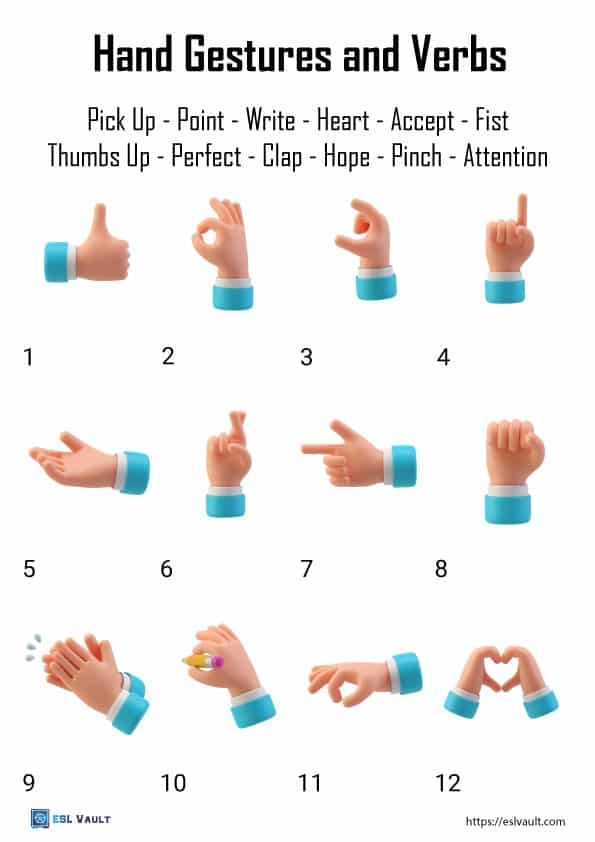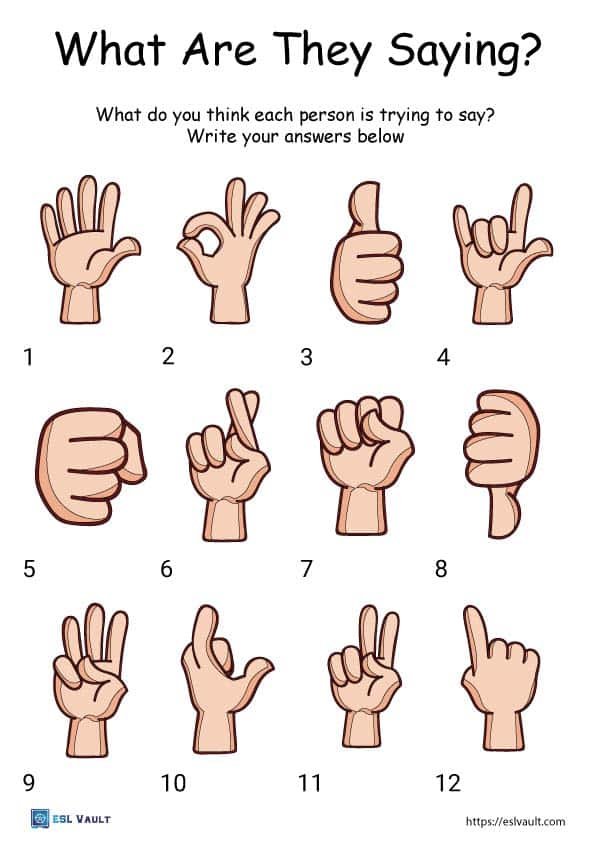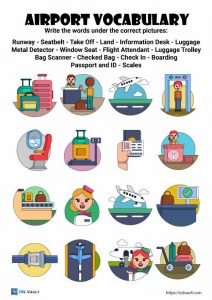ESL hand gestures worksheets
This is a very interesting topic, hand gestures and body language, in general, are diverse all over the world. Different world regions and cultures associated their own meanings with hand gestures. These hand gestures worksheets are based on the meanings associated with them in western countries such as North America and the UK.
Note when using these handouts you should be aware of your students’ culture and what may be offensive. It may not be appropriate to use any of these worksheets at all. With older classes such as late teens and adults, however, it can be a fun topic that brings a lot of laughter to your classroom.
The answers for the first vocabulary matching activity above are –
1 Pistol, 2 Stop, 3 Pray, 4 High Five
5 Four, 6 Peace, 7 Perfect, 8 Pinch
9 One, 10 Carry, 11 Claw, 12 Fist
Feel free to add vocabulary to each hand signal where you think it is required or if you disagree with the worksheets answers.
Hand getsures and verbs
This worksheet is different from the first one and has pictures of both verbs and hand gestures.
The answers are –
1 Thumbs Up, 2 Perfect, 3 Pinch, 4 Attention
5 Accept, 6 Hope, 7 Point, 8 Fist
9 Clap, 10 Write, 11 Pick Up, 12 Heart
Again, feel free to make any changes to the worksheet that you think are more suitable for you.
Hand gestures meanings worksheet
This handout is a little different in that not vocabulary has been provided for the students.
It is up to the class to write what each hand signal means to them. You may get varying answers throughout your class, including some that are quite funny.
Further hand gestures activities
For a follow-up or even a warm-up exercise, you can shout out some words to the class and get them to use their hands to match the meaning of the words. This can be great practice for verbs. You can even turn this into a game of Simon Says!
Another idea is to get students to acts in a charades kind of way to hypothetical situations. For example, how would they tell someone they were hungry and had no money using only their hands. There are countless scenarios you can create depending on the level of your class.
It is also a good time to ask ESL students about gestures in their own local cultures. Students can demonstrate hand gestures, explain their meanings, and in what kinds of situations they would be used.






